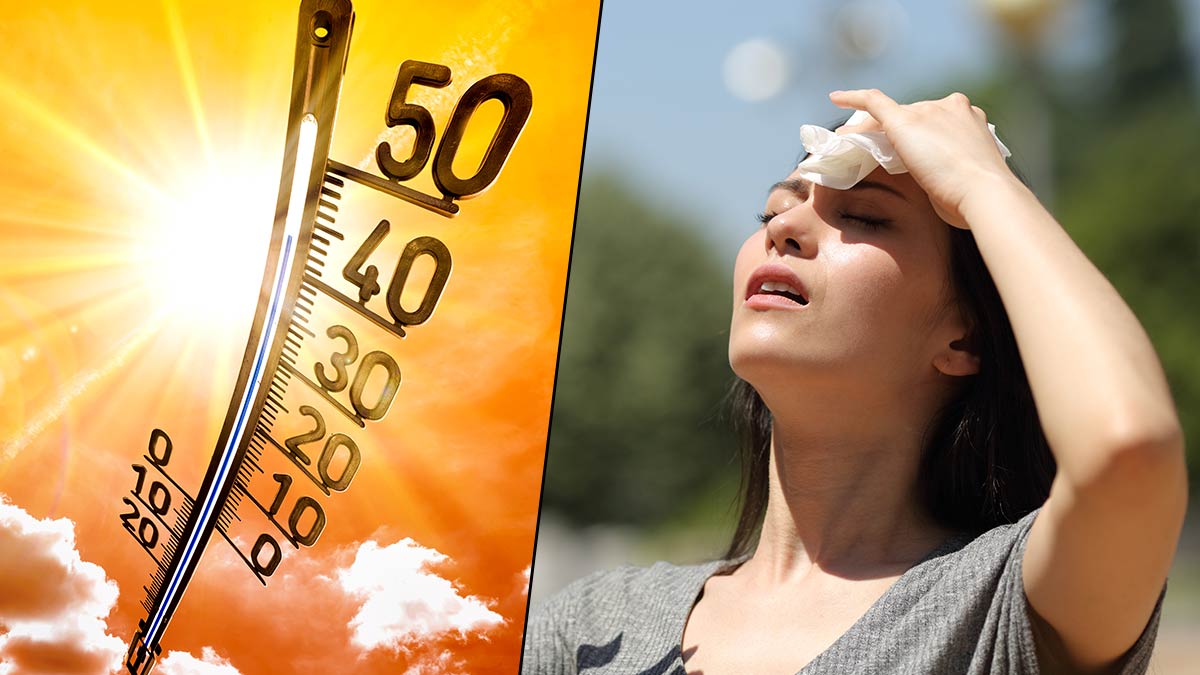
25 Jun Heat Waves: Before, During & After
We may think of Canada as the winter capital of the world, but summers can get very hot. A prolonged period of heat can become dangerous for many people.
Prolonged exposure to extreme heat can result in heat-related emergencies, such as heat cramps, heat exhaustion, and heat stroke. The best way to protect yourself and your family in case of a heat wave is to follow these steps:
- Stay hydrated and cool.
- Check with your neighbours, friends and those at risk.
- Be prepared for power outages, and have an emergency plan in place.
- Check the contents of your emergency kit in case of a power outage.
Before:
- Listen to local news and weather reports for heat warnings.
- A heat warning, as defined by Environment Canada, means daytime and nighttime temperatures or humidex values are expected to be higher than the average high temperature for 2 or more days in a row.
- Know the humidex rating – it combines the temperature and humidity to indicate how hot the weather feels to the average person.
- Find ways to keep cool before hot weather starts.
- Arrange air conditioning and fans to help keep your home cool.
- Find out where you can go to get cool such as public libraries, malls, and municipal cooling centers while abiding by public health guidance during COVID-19.
- Find out where you can go to get cool such as public libraries, malls, and municipal cooling centers.
- Discuss heat safety with members of your household. Have a plan for wherever you spend time – home, work and school – and prepare for possible power outages.
- Get trained in first aid to learn how to treat heat-related emergencies.
- Ensure you have sunscreen (SPF 15 or higher), as sunburned skin reduces the body’s ability to cool itself.
- Stay hydrated. Drink plenty of cool liquids before you feel thirsty to reduce your risk of dehydration and heat related illness.
- Ensure that your animals’ needs for water and shade are met.
- Make sure you know those who are most at risk in your neighbourhood, such as the elderly, children and those who are sick or in need of extra assistance.
- Further information for heat wave planning can be found online at on the Sun Safety section of the Public Health Agency of Canada website.
During:
- Stay hydrated and cool
- Drink plenty of cool fluids, even if you don’t feel thirsty, and check in with children and seniors to make sure they are drinking regularly.
- Avoid caffeine and alcohol because they can cause dehydration, which stops your body from controlling its temperature properly
- Avoid being outside during the hottest part of the day (typically between 10 a.m. and 2 p.m.).
- Dress for the heat and for your activity level:
- Wear light, loose clothing to let air circulate and heat escape.
- Always wear a hat and apply sunscreen with SPF 15 or higher before going outside.
- Slow down your activities as it gets hotter. Move indoors and don’t work, exercise, or play outside for an extended period of time.
- Take frequent breaks in a cool or shady area and use a buddy system if you need to be outside when it’s hot.
- Check on your pets and animals frequently – make sure their needs for water and shade are met.
- Drink plenty of cool fluids, even if you don’t feel thirsty, and check in with children and seniors to make sure they are drinking regularly.
- Check with your neighbours, friends and those at risk.
- Pay close attention to how you and those around you feel. Following public health guidelines in your province or territory, check on vulnerable family members, friends and neighbours (such as children, the elderly and ill) who may require assistance.
- Never leave children or pets alone in enclosed vehicles.
- Anyone who experiences a sunburn should immediately move out of the sun, move to a cool area and consume extra fluids for the days following.
- A severe sunburn may require medical attention if it results in display blisters, facial swelling, nausea, fever or severe chills, rapid pulse or breathing, signs of dehydration, etc.
- Heat cramps, heat exhaustion, or heat stroke, can happen to anyone who stays in the heat and sun for too long.
- Watch for symptoms of heat illness, such as:
- Dizziness or fainting
- Nausea or vomiting
- Headache
- Rapid breathing and heartbeat
- Extreme thirst
- Decreased urination with unusually dark yellow urine
- Changes of behaviour in children
- Heat stroke is a medical emergency. Call 911 or your local emergency number if you are caring for someone who displays:
- Signs of heat illness
- Unconsciousness
- Confusion
- Or has stopped sweating
- Watch for symptoms of heat illness, such as:
- Pay close attention to how you and those around you feel. Following public health guidelines in your province or territory, check on vulnerable family members, friends and neighbours (such as children, the elderly and ill) who may require assistance.
Visit www.redcross.ca/heat for more heat safety information.
After:
- Open windows and blinds to allow fresh air to circulate through your home.
- Check on neighbours, friends amd family, especially those at risk.
- Continue to stay hydrated by drinking water.
- Experiencing a disaster is challenging enough, but during the COVID-19 pandemic it can feel even more difficult. The Red Cross has many resources available to help you navigate these challenging times. You can also find mental and emotional wellbeing resources on the Public Health Agency of Canada, or any provincial/territorial health authority website.


